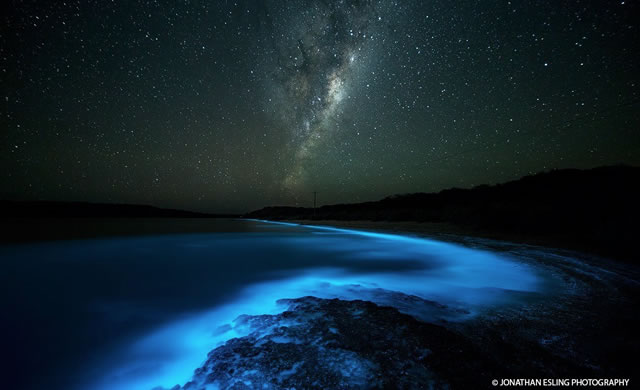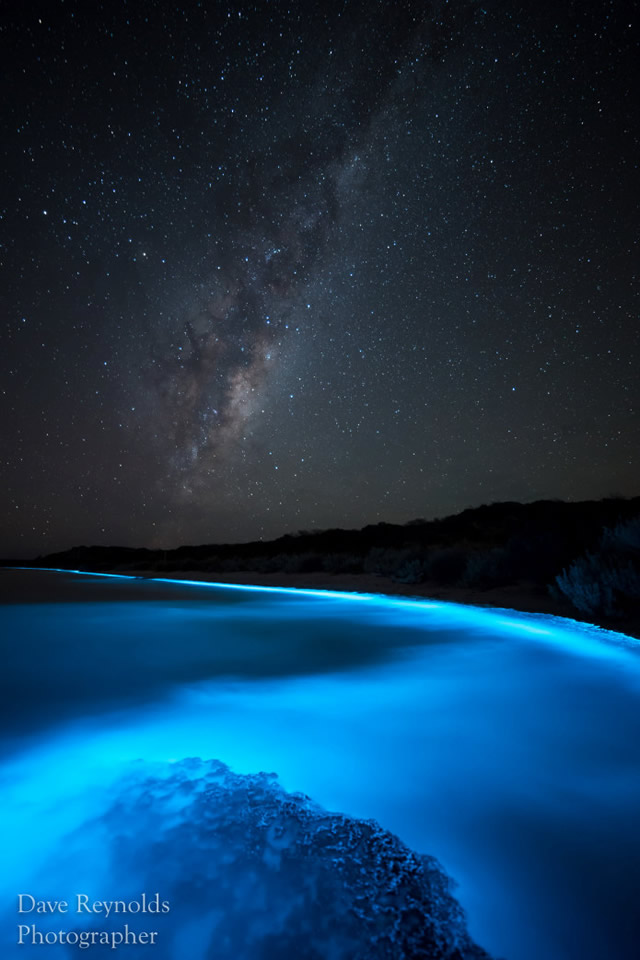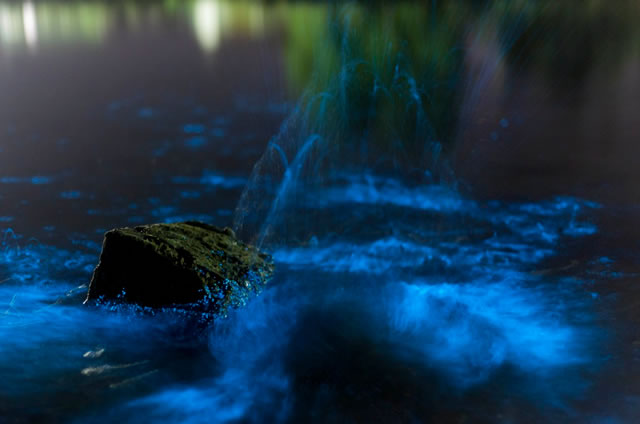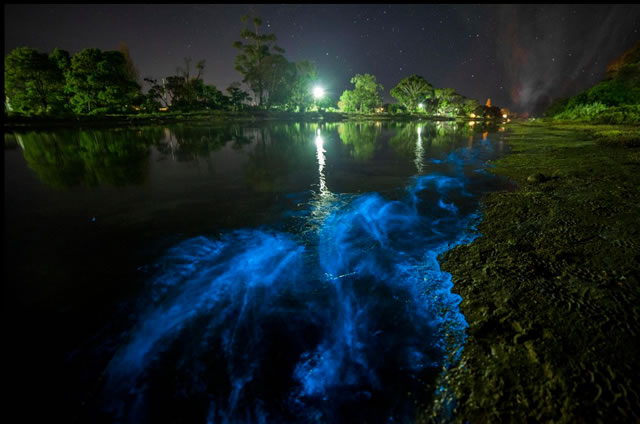
I comuni mortali si meravigliano di Madre Natura da tempo immemorabile, pensiamo a tramonti e albe, ai fulmini, alle tempeste di grandine, alle eclissi, alle aurore, agli arcobaleni … e ai fiocchi di neve. L’arte della natura ha ispirato pittori, poeti, amanti, disperati e a tutti ha fornito un mezzo per sentire una connessione a qualcosa di molto più grande di noi stessi. Questo collegamento, questa attrazione per la natura, trascende i confini culturali, paradigmi politici e il passare del tempo. Ed è stato così anche quando si è rivelato questo spettacolo brillante di un blu elettrico in tutto il sud della Tasmania.
Questa storia inizia con piccolo gruppo di fotografi che stavano preparandosi per il loro venerdì sera in cerca di aurore. Il cielo era chiaro, la luce della luna era fioca, il clima mite; ma purtroppo l’aurora quella sera non è riuscita a svilupparsi. Mentre stavano dirigendosi verso casa hanno notato uno strano bagliore provenire dalle onde che si infrangevano in lontananza. La marea era troppo lontana per poter osservare in maniera ottimale, ma la curiosità aveva già preso piede. Così ci è voluto davvero poco per pianificare di tornare la sera successiva alla scoperta di quello spettacolo incandescente. E il resto, come si suol dire, è storia.

Sea Sparkle – Credit: Dave Reynolds
Il fenomeno della bioluminescenza – o mare scintillante (da noi detto anche “Mare in Amore”) – è causato da organismi che emettono luce propria con una reazione chimica all’interno del loro corpo. In questo caso, l’organismo è un piccolo dinoflagellato chiamato scintillans Noctiluca, latino per “luce notturna frizzante”. I dinoflagellati sono un tipo di fitoplancton (fito = pianta, plancton = sbandato); Tuttavia, essi non sono veri piante, piuttosto, sono microscopiche alghe unicellulari. Sono come alghe, ma molto più piccolo. Piuttosto che creare la propria energia come fa una pianta, consumano la materia organica che galleggia intorno a loro, compresi altri organismi singoli come plancton e anche uova di pesce.

We mere mortals have marvelled at Mother Nature since time immemorial: sunsets and sunrises, lightning, hail storms, eclipses, aurorae, rainbows… and even snowbows for that matter. Nature’s art has inspired painters, poets, lovers, and the forlorn, and provided us all with a means of feeling a connection to something so much bigger than ourselves. This connection – this attraction to nature – transcends cultural boundaries, political paradigms, and the passage of time. And it was has been on full, electric blue display across southern Tasmania.
Our story begins with a handful of aurora photographers, who were out on their regular Friday night aurora hunt. The skies were clear, the moonlight was dim, and the weather mild; unfortunately the aurora failed to develop. As they were heading home, they noticed a strange yet illuminating glow coming from waves lapping in the distance. The tide was too far out to get a closer look, yet curiosity had taken hold and a plan was made to return the next night on the hunt for the glowing stuff. And the rest, as the saying goes, is history.
The phenomenon of bioluminescence – or sea sparkles – is caused by organisms that make their own light with a chemical reaction inside their body. In this case, the organism is a tiny dinoflagellate called Noctiluca scintillans, Latin for “sparkling night light”. Dinoflagellates are a type of phytoplankton (phyto = plant, plankton = drifter); however, they aren’t true plants, rather, they are microscopic single-celled algae. They are like seaweed, but much smaller. Rather than make their own energy like a plant does, they consume organic matter floating around them, including other single-called organisms like plankton and even fish eggs.

Images by Alison Painter, Dallas Stott, Geraldina Dijkstra, Jonathan Esling, Leoni Williams, Nic Fitzgerald, Paul Fleming, Theresa Ockenden, Dave Reynolds, and Nick Dobinson
Source/Continue reading → www.tasmaniangeographic.com





















